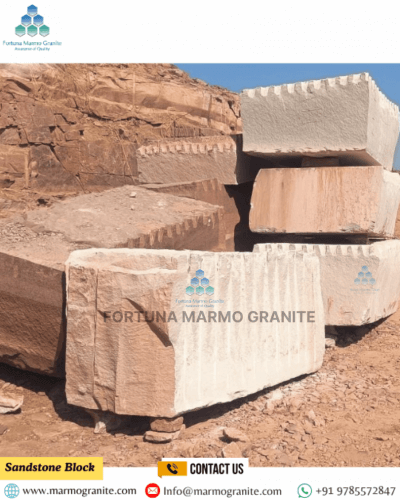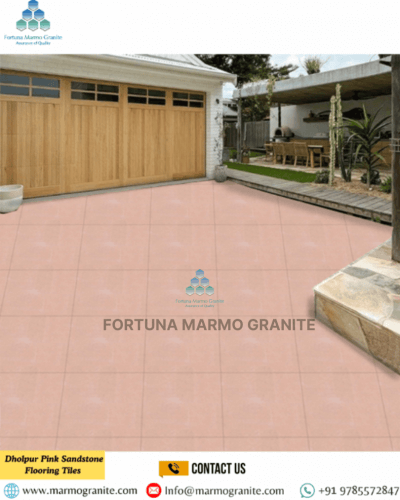Sandstone Blocks for Carving and Sculpture: The Artisan's Natural Canvas
Sandstone Blocks: For thousands of years, artists have searched for the perfect material to bring their ideas to life, and they have always chosen sandstone as a favorite. In its raw block form, it serves as a natural canvas ready to be shaped. Countless masterpieces, from ancient temple carvings to modern sculptures, have been created using its versatile qualities.
Sandstone carves easily, which makes it ideal for both fine details and large designs. Its soft grain and warm, earthy colors add natural charm to every piece, creating timeless beauty that suits both traditional and modern styles. Moreover, artists value sandstone blocks for their strength, durability, and elegance. Whether they use them for statues, decorative panels, or detailed carvings, sandstone holds a unique place in the world of art. Even in today's era of man-made materials, it represents authenticity and craftsmanship, which is why artists worldwide still choose it for both classic and contemporary sculptures.
A Legacy Etched in Stone: Why Sandstone Endures
The connection between humanity and sandstone goes back to ancient civilizations. People valued sandstone for its wide availability and consistent texture. These qualities made it ideal for monumental architecture, decorative elements, and freestanding sculptures. Interestingly, the same properties admired in the past are still appreciated by artists today.
Firstly, its workability is one of the main reasons for its popularity. Sandstone is made of sand grains that are cemented by minerals like silica, calcium carbonate, and iron oxide. Because of this composition, it is softer than many igneous and metamorphic rocks. As a result, artisans can carve it more easily using both traditional hand tools and modern machinery. This flexibility allows for sweeping shapes as well as intricate details, giving artists a wide range of creative possibilities.
Secondly, sandstone offers a remarkable variety of colors and textures. Its appearance depends on the minerals it contains and the geological processes that formed it. As a result, sandstone can be found in shades ranging from warm buffs and creams to deep reds, oranges, greens, and even purples. This natural coloration adds depth and character to sculptures. It also removes the need for artificial pigments, allowing the stone's natural beauty to shine.
Texture is another defining feature of sandstone. The grain size and type of cement determine whether the surface feels silky smooth or rugged and granular. Each variation provides unique tactile and visual qualities, giving artists more creative freedom.
The Journey from Quarry to Workshop: Selecting Your Canvas
- Type of Sandstone: Different regions offer unique sandstone varieties, each with its own qualities. For example, Indian sandstone is known for its vibrant reds and buffs, while British sandstone stands out for its fine grain and pale shades. Before starting a project, it's important to research and understand the properties of the stone you plan to use.
- Color and Grain: The natural color and grain size greatly influence the final look. An artist may pick a certain shade to match the subject of the artwork. The grain can also be chosen to achieve either a smooth finish or a textured effect, depending on the design.
- Uniformity and Flaws: Always inspect the block carefully. Check for cracks, fissures, or inclusions (traces of other minerals). Small imperfections may add character, but major flaws can weaken the stone and cause unexpected issues during carving.
The Artisan's Dance: Carving and Shaping the Stone
- Tools for Sandstone Carving The tools used depend on the scale and detail of the work. For rough shaping, artisans often use pneumatic hammers with different chisels to remove large amounts of material quickly. As the sculpture takes shape, hand chisels—flat, toothed, and pointed—become essential, giving precise control and allowing delicate details to be carved. Next, rasps and rifflers are used to smooth the surface, and finally, abrasives ranging from coarse grits to fine powders bring out the desired polish and finish..
- The Carving Process The carving process combines subtractive sculpting with a deep understanding of the stone's natural properties. The artist first visualizes the form hidden within the block. Step by step, the artist removes material to reveal the sculpture. Understanding the stone's grain is very important. Carving along the grain makes the work easier, while carving against it may cause splintering or uneven breaks.
Beyond the Chisel: Surface Treatment and Finishing
Finishing a Sandstone Sculpture
- Texturing: Artists create different styles by applying various textures. Sometimes they leave chisel marks to highlight the handmade nature of the piece. Other times they smooth the surface to bring out the stone's natural patterns. Tools like chisels, bush hammers, and star points help them achieve a wide range of textures.
- Polishing: Artists use progressively finer abrasives, often with water, to give the sculpture a smooth, slightly shiny finish and to reveal the natural colors and patterns of the sandstone.
- Sealing: Since sandstone is porous, moisture and weather can damage it, especially outdoors. Artists protect it by applying a suitable stone sealer, choosing the type based on the sandstone variety and the sculpture's placement.
- Patination: Artists sometimes allow the stone to age naturally over time to add character and depth. In other cases, they apply special techniques to accelerate aging or give the sculpture a vintage, aged appearance.
Conclusion
Sandstone blocks are more than just raw materials—they form the foundation of creativity, storytelling, and timeless craftsmanship. For generations, artisans and sculptors have chosen sandstone for its ideal carving properties. Its uniform grain, natural resilience, and ease of shaping intricate patterns make it a favorite material. Throughout history, temples, majestic monuments, detailed reliefs, and custom sculptures have been created using sandstone. This versatility bridges the gap between tradition and modernity. Moreover, its warm, earthy tones and subtle variations add a unique aesthetic that cannot be replicated. As a result, every sculpture or carved structure is made into a one-of-a-kind masterpiece.
Indian Granite Supplier At Fortuna Marmo Granite, we recognize and celebrate the rich artistic legacy that sandstone enables. That's why we are committed to offering the highest-quality sandstone blocks, carefully extracted and expertly processed to meet the precise demands of artists, designers, and builders around the world. With an extensive selection, consistent dimensions, and a promise of durability, our sandstone products serve as a trusted medium for those who seek to transform imagination into enduring art. Whether you're a master sculptor breathing life into stone or an architect shaping heritage structures, Fortuna Marmo Granite is here to support your vision with authenticity, reliability, and unmatched craftsmanship—making us your go-to source for premium sandstone blocks for carving and sculpture.



